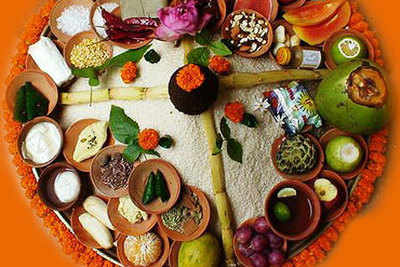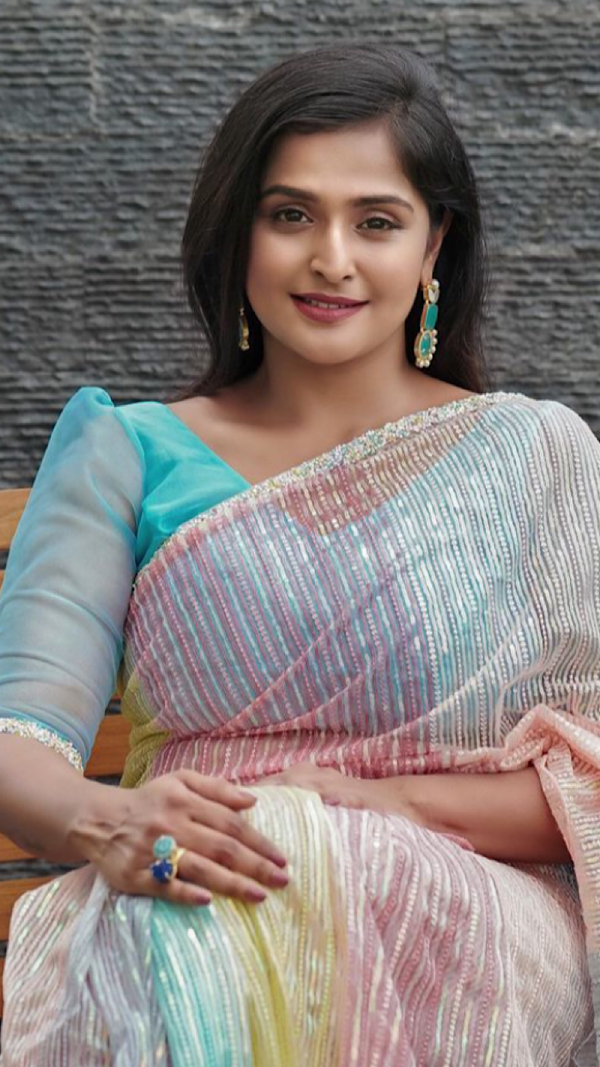Trending
This story is from April 14, 2014
Lots of food and fun at Navi Mumbai's Basanti Puja
Koparkhairane-based all women organisation Bangiya matri Sangha hosted this puja with complete fanfare over five days from April 5 to 9.

Koparkhairane-based all women organisation Bangiya matri Sangha hosted this puja with complete fanfare over five days from April 5 to 9.
We all are aware that Durga Puja is the most important festivals for Bengalis, and the entire community eagerly waits for it every year. However, in the form of Basanti Puja, the community gets a chance to see Maa Durga twice a year.As the name suggests, this puja is observed in the season of Spring (Basanta) and Bangiya Matri Sangha is celebrating this puja for the ninth consecutive year this time.
Chanda Chakroborty, President of Bangiya Matri Sangha is the most enthusiastic among the lot about hosting this unique puja, which is an elaborate affair in West Bengal. However, in Navi Mumbai, this is the only Basanti Puja that is being hosted since the past nine years. The-six-feet-tall idol of Goddess Basanti Durga was installed at the Lions Club premises in Koparkhairane. The idol was sculpted by Ambarnath-based Bimal Pal, who has been sculpting idols for the past nine years now. “Also known as Basanti Durga Puja, legend has it that it originated when King Surath performed the first ever Durga Puja in Spring. It is believed that the king had lost his kingdom and wandered in the forests where he met Samadhi Vaishya who also had lost kingdom. In the jungle, they met Medha Muni, who, on request, suggested them to perform Basanti Durga Puja to get back their lost kingdoms; hence the ritual,” said Chanda.
Maa Basanti also comes home with her four children Goddesses Saraswati and Lakshmi and Lord Ganesha and Kartik; who are also worshipped along with her. The puja began on April 5 this year, the first day being Sashti. As per rituals, the ghat is installed, followed by a Bodhon in the evening which is a ritual to welcome the goddess.
Every afternoon, starting from Saptami, about 300 people were treated to sumptuous authentic Bengali food as bhog that included items like khicuri, labda, chutney, sweet, pulao, sonar moong dal with coconut, paneer vegetable, to name a few. The last day, on 9th April i.e. Dashami, women played vermillion as part of Sindoor Utsav and bid adieu to Maa, for her to return next year.
An organisation that consists of 15 enterprising women, it started with the first Kali Puja in Koparkhairane in 1998 in a small book shop. “Konika Ghosh, Manju Gan and I started the celebration. We were then joined by other women who also had similar ideologies. We are a registered organisation and ours is the only organisation that hosts a Basanti Puja in Navi Mumbai,” added Chanda. Navi Mumbai Bengali Association President Sukanto Nag is one of the key people who supports the Sangha in its endeavour. He helps them in every possible way so that the puja can be hosted with pomp and fervour.
We all are aware that Durga Puja is the most important festivals for Bengalis, and the entire community eagerly waits for it every year. However, in the form of Basanti Puja, the community gets a chance to see Maa Durga twice a year.As the name suggests, this puja is observed in the season of Spring (Basanta) and Bangiya Matri Sangha is celebrating this puja for the ninth consecutive year this time.
Chanda Chakroborty, President of Bangiya Matri Sangha is the most enthusiastic among the lot about hosting this unique puja, which is an elaborate affair in West Bengal. However, in Navi Mumbai, this is the only Basanti Puja that is being hosted since the past nine years. The-six-feet-tall idol of Goddess Basanti Durga was installed at the Lions Club premises in Koparkhairane. The idol was sculpted by Ambarnath-based Bimal Pal, who has been sculpting idols for the past nine years now. “Also known as Basanti Durga Puja, legend has it that it originated when King Surath performed the first ever Durga Puja in Spring. It is believed that the king had lost his kingdom and wandered in the forests where he met Samadhi Vaishya who also had lost kingdom. In the jungle, they met Medha Muni, who, on request, suggested them to perform Basanti Durga Puja to get back their lost kingdoms; hence the ritual,” said Chanda.
Maa Basanti also comes home with her four children Goddesses Saraswati and Lakshmi and Lord Ganesha and Kartik; who are also worshipped along with her. The puja began on April 5 this year, the first day being Sashti. As per rituals, the ghat is installed, followed by a Bodhon in the evening which is a ritual to welcome the goddess.
On Saptami, Pran Partishta (invoking life into the idol) and Kalabou Snan (bathing banana tree with holy water; since she is known to be Lord Ganesha’s wife was performed. Ashtami is comprised of a ritualistic Maha Snan followed by Puja; and Sandhi puja; while Navami witnesses Kumari Puja.
Every afternoon, starting from Saptami, about 300 people were treated to sumptuous authentic Bengali food as bhog that included items like khicuri, labda, chutney, sweet, pulao, sonar moong dal with coconut, paneer vegetable, to name a few. The last day, on 9th April i.e. Dashami, women played vermillion as part of Sindoor Utsav and bid adieu to Maa, for her to return next year.
An organisation that consists of 15 enterprising women, it started with the first Kali Puja in Koparkhairane in 1998 in a small book shop. “Konika Ghosh, Manju Gan and I started the celebration. We were then joined by other women who also had similar ideologies. We are a registered organisation and ours is the only organisation that hosts a Basanti Puja in Navi Mumbai,” added Chanda. Navi Mumbai Bengali Association President Sukanto Nag is one of the key people who supports the Sangha in its endeavour. He helps them in every possible way so that the puja can be hosted with pomp and fervour.
End of Article
FOLLOW US ON SOCIAL MEDIA









